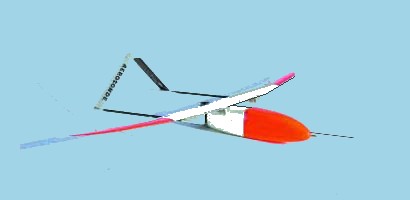|
Hurricane Unmanned Aircraft Systems (UAS) Demonstration Project 2007Key Collaborators:
Power Point presentation on NOAA's Unmanned Aircraft Systems testbedPower Point presentation on HRD's project Aerosonde first hurricane flight NASA's Wallops Flight Facility
Objective: The key scientific objectives are :
Method: Conduct a Hurricane Aerosonde Demonstration Project in Key West The demonstration project is scheduled to run for approximately 10 weeks, from Aug. 27th to Oct. 31, 2007, in cooperation with Aerosonde Corp., NASA, and the U.S. Navy. The Aerosondes will be deployed at Key West Naval Air Station (NASKW), and will have an approximate 1200 nautical mile (round-trip) operational range. A second deployment location will be NASA's Wallops Flight Facility in southeast Virginia. In addition, Aerosonde experiments will be coordinated with NOAA and AFRES manned aircraft missions during the 2007 demo. The following experiments are possible:
Background: While the successful utilization of the P-3 Orion and Gulfstream 4 aircraft have made NOAA a global leader in the area of hurricane aircraft surveillance and reconnaissance, detailed observations of the near-surface tropical cyclone (TC) boundary layer environment have been elusive due to the severe safety risks associated with low level TC manned flight missions. The primary objective of this funded project is to address this significant observational shortcoming by utilizing the unique low flying attributes of the (unmanned) Aerosonde observing platform. It is believed that the payoff for such an effort would be significant and in some cases immediate. These benefits would include detailed documentation of a theretofore unknown region of the TC and simultaneously provide NOAA's Tropical Prediction Center (TPC) with real-time near surface wind and thermodynamic data within the TC environment. In addition, this effort will enhance our physical understanding of this critically important environment and ultimately, provide improvements to future forecasts of TC intensity change. Continuous observation of the high-wind hurricane boundary layer has never been fully documented. This environment, where the atmosphere meets the sea, is critically important since it is where the ocean's warm water energy is directly transferred to the atmosphere just above it. The TC surface layer is also important because it is where we find the strongest winds in a hurricane and coincidentally, the level at which most of us live (i.e. at/near the surface). As such, observing and ultimately better understanding this region of the storm is crucial if we hope to improve our ability to make accurate forecasts of TC intensity change. Enhancing this predictive capability would not only save our economy billions of dollars but more importantly it would save countless lives.
Key references:
Last modified: 7/25/2006 |
Links of Interest
AOML Tools & Resources
Employee Tools
|
 The primary objective of this project is to demonstrate the Aerosonde
platform's overall capabilities (including survivability) in a hurricane
environment.
The primary objective of this project is to demonstrate the Aerosonde
platform's overall capabilities (including survivability) in a hurricane
environment.
